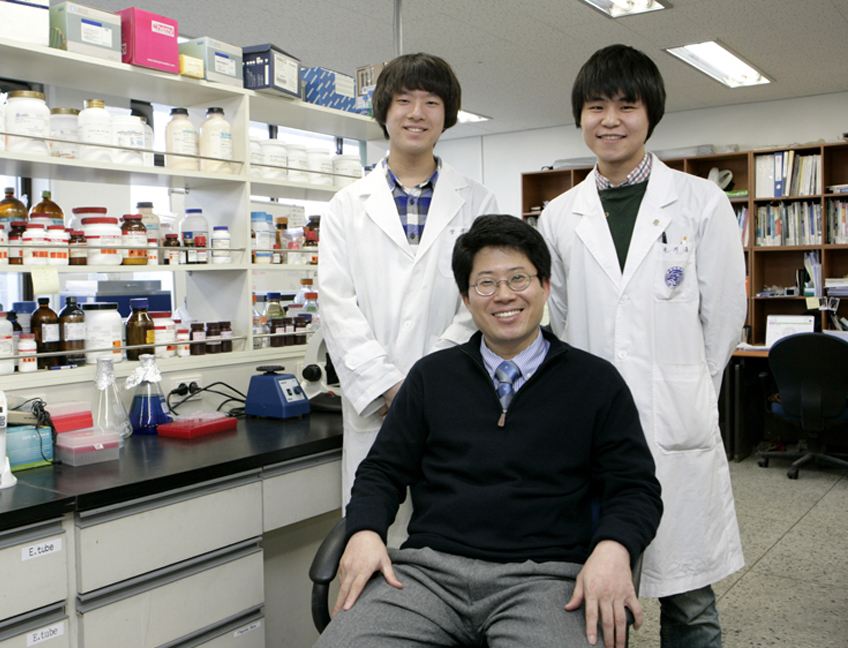Jang, Wook-joo, a junior, becomes world's first to define 'Aging acceleration mechanism of fructose'
In April 2008, Park, Gi-hoon, a senior, published in a SCI journal
[Jan 8, 2010]
A junior has published a thesis in an SCI level international journal as the main author.

Professor Cho, Kyung-hyun and Jang, Wook-joo (left), Park, Gi-hoon, posing at the School of Biotechnology Research Lab
The spotlight is on Jang, Wook-joo (21) a member of the Professor Cho, Kyung-hyun Research Lab (hereinafter called research team) of the Yeungnam University School of Biotechnology. He proved that fructose changed the structure and functions of key proteins in the blood to cause and promote diabetes, atherosclerosis and aging, and defined its mechanism, he placed his name as the main author on the January 2010 issue of BBRC (Biochemical Biophysical Research Communication), which is an SCI international journal.
In particular, by being the world's first to define the aging acceleration mechanism of fructose in this thesis, the academic circle is showing high interest. This is because fructose, the sweetest sugar, is used as a sweetener of sodas and fast food and is consumed usually.
Accordingly, the research that has been conducted under the support of the Korea Foundation for the Advancement of Science's URP (Undergraduate Research Program) and the Yeungnam University Aging-associated Vascular Disease Research Center since January of last year, resulted in patent pending for development of inhibitors of metabolic syndromes such as aging suppression, diabetes and atherosclerosis.
It is very rare for an undergraduate to publish SCI theses. It is even more rare that he placed his name as the main author in the international SCI journal and the results ended up in applying for patents. However, this has happened twice in the research lab of Professor Cho, Kyung-hyun in the School of Biotechnology.
Two years ago, as a senior at that time Park, Gi-hoon (24, 2nd batch of MA/PhD integrated course) placed his name as the main author on the thesis that revealed that proteins extracted from Hyphantria cunea could be used as treatment for atherosclerosis in the December 2008 issue of the 2nd most prominent SCI journal, Comparative Biochemistry and Physiology. Park is the co-author of this thesis together with Jang, Wook-joo.
The two students stated, "While conducting research, we learned the danger of sweet tastes." They also said, "It was tough having to work all day long at the lab without any days off, but we were cheered by belief that our research could bring health and happiness to many people," and added, "I hope our belief in our lab will result in better achievements, and hope that our junior students will also publish their works on SCI journals."
Professor Cho, Kyung-hyun (41), who instructed them, stated, "Gi-hoon set a good example of diligence coming into the lab at 7:30 everyday to turn the lights on and leaving at 10pm turning the lights off. Wook-joo made his good example and was able to work even harder." Cho also added, "I am happy and grateful to my students who show their ability to surpass me."










